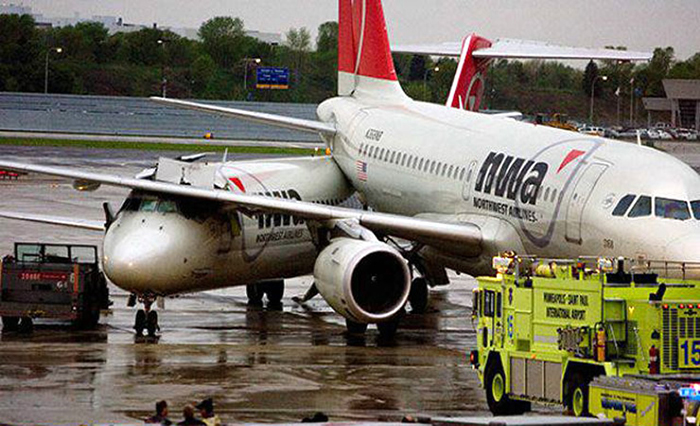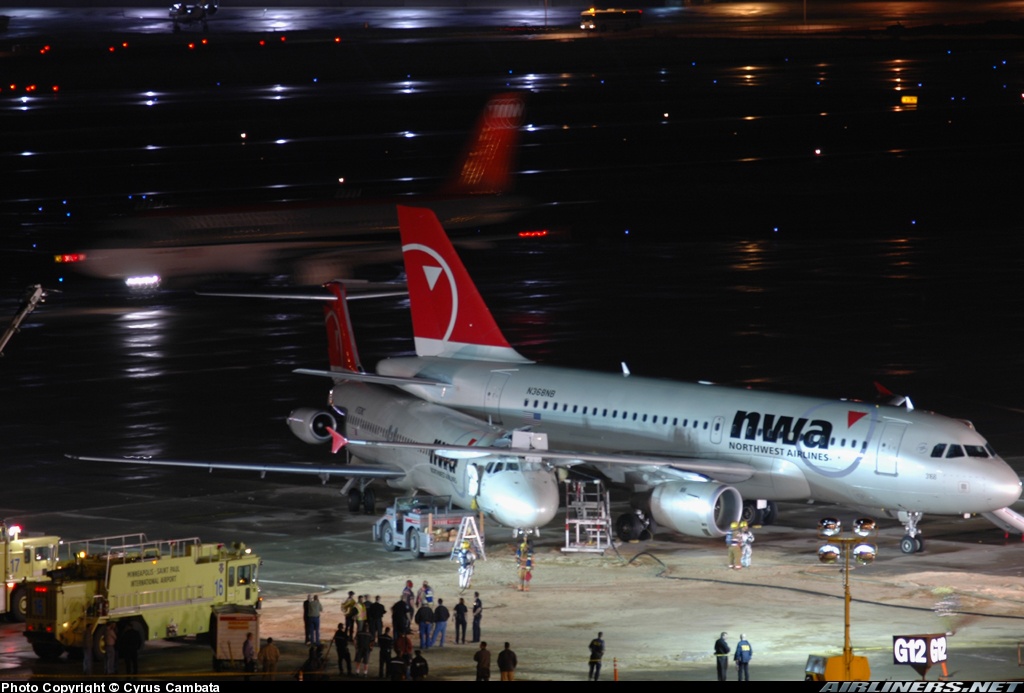Country
code
MN
Crash of a Piper PA-31-325 Navajo C/R near Two Harbors: 1 killed
Date & Time:
Jun 8, 2012 at 1427 LT
Registration:
N174BH
Survivors:
No
Schedule:
South Saint Paul - South Saint Paul
MSN:
31-7612038
YOM:
1976
Crew on board:
1
Crew fatalities:
Pax on board:
0
Pax fatalities:
Other fatalities:
Total fatalities:
1
Circumstances:
On June 8, 2012, about 1307 central daylight time, a Piper PA-31-325, N174BH, departed from the South St Paul Municipal Airport-Richard E Fleming Field (SGS), South St Paul, Minnesota for a maintenance test flight. The airplane reportedly had one of its two engines replaced and the pilot was to fly for about 4 hours to break-in the engine. The airplane did not return from the flight and was reported overdue. The airplane is missing and is presumed to have crashed. The airline transport pilot has not been located. The airplane was registered to Family Celebrations LLC, and was operated as a 14 Code of Federal Regulations Part 91 personal flight. Visual meteorological conditions prevailed and no flight plan was filed. The flight departed SGS with the intention of returning to SGS at the conclusion of the flight. The airplane was reported missing and an alert notification issued about 2225. The last reported contact with the airplane and pilot was about 1300 when the fixed base operator at SGS towed the airplane to the fuel pumps. When he returned about 15 minutes later, the airplane was no longer there. Aircraft radar track data from various ground based sources indicated that the airplane departed SGS about 1307. The airplane maneuvered east of SGS before turning toward the north. The airplane's track continued north toward Duluth, Minnesota. Once the airplane reached Duluth, it followed the west shoreline of Lake Superior. Radar track data indicated that the airplane was at a pressure altitude of 2,800 feet when it reached the shoreline. The airplane continued along the west shoreline toward Two Harbors, Minnesota, flying over the water while maintaining a distance of about 0.5 miles from the shore. As the airplane approached Two Harbors, it descended. The airplane's last recorded position at 1427 was about 30 miles northeast of Duluth, Minnesota, at an uncorrected pressure altitude of 1,600 feet. The Air Force Rescue Coordination Center coordinated a search for the missing airplane. The Civil Air Patrol, United States Coast Guard, and other entities participated in the search efforts. Search efforts were suspended on July 4, 2012.
Probable cause:
Undetermined because the airplane was not found
Final Report:
Crash of a Cessna S550 Citation S/II in Warroad
Date & Time:
Nov 11, 2011 at 2130 LT
Registration:
N600KM
Survivors:
Yes
MSN:
S550-0008
YOM:
1984
Crew on board:
0
Crew fatalities:
Pax on board:
0
Pax fatalities:
Other fatalities:
Total fatalities:
0
Circumstances:
After a night landing on runway 13 at Warroad Airport, the aircraft collided with a White-tailed deer. The crew was able to stop the aircraft that suffered structural damages to the left wing. There were no injuries but the aircraft was damaged beyond repair.
Probable cause:
No investigation was conducted by NTSB.
Crash of a Rockwell Shrike Commander 500S in Eden Prairie
Date & Time:
Apr 8, 2011 at 1730 LT
Registration:
N51RF
Survivors:
Yes
Schedule:
Eden Prairie - Eden Prairie
MSN:
500-3298
YOM:
1976
Crew on board:
2
Crew fatalities:
Pax on board:
0
Pax fatalities:
Other fatalities:
Total fatalities:
0
Captain / Total hours on type:
217.00
Copilot / Total hours on type:
2480
Aircraft flight hours:
11298
Circumstances:
The pilot reported that he performed a stabilized visual approach with a right crosswind. The airplane touched down on the centerline and subsequently drifted to the right. The pilot overcorrected for the drift and the airplane veered hard to the left. The airplane continued off the left side of the runway and skidded to a complete stop. The right main landing gear collapsed and the right wingtip hit the ground, which resulted in substantial damage to the fuselage and wing. A postaccident inspection of the airplane revealed no preimpact anomalies. The pilot additionally reported that there was no mechanical malfunction or failure.
Probable cause:
The pilot's inadequate compensation for the crosswind while landing, which resulted in a loss of directional control.
Final Report:
Crash of a Piper PA-46-310P Malibu in Milaca: 2 killed
Date & Time:
Dec 30, 2010 at 0958 LT
Registration:
N9103N
Survivors:
No
Schedule:
Aitkin - Beaumont
MSN:
46-08021
YOM:
1986
Crew on board:
1
Crew fatalities:
Pax on board:
1
Pax fatalities:
Other fatalities:
Total fatalities:
2
Aircraft flight hours:
2466
Circumstances:
About 20 minutes after departing on a cross-country flight, the pilot acknowledged the air traffic controller’s clearance to climb to 17,000 feet mean sea level (msl). Radar data indicated that the airplane reached a maximum altitude of 16,800 feet msl. The airplane then entered a right descending turn followed by a left descending turn. While in the left turn, the pilot informed the controller, “I lost my autopilot; I’m in an unusual attitude.” The pilot stated this same information two more times in response to transmissions by the controller. The pilot’s last transmission was that he was busy trying to recover the airplane. Witnesses heard the airplane flying overhead for several minutes, but they could not see it due to the low ceiling. A postaccident examination of the airplane did not reveal any pre accident mechanical malfunctions or failures with the engine that would have precluded normal operation. Examination of the autopilot system revealed a loose screw inside the pitch servo housing. The screw was one of two that secured the high wattage resistor to the solenoid housing. Observed corrosion within the screw threads was consistent with the threads not being engaged in a nut or other internally threaded feature. No mechanical damage or arcing was visible on the screw. The operational impact of the loose screw is unknown. The pilot’s instrument flying proficiency could not be determined. According to log records, the pilot last flew 4.5 months before the accident. The airplane was in instrument meteorological conditions when the pilot stated that he was trying to recover from the unusual attitude. The pilot did not follow prescribed procedures for an autopilot malfunction. Weather data indicates that the airplane most likely encountered turbulence and icing conditions during the flight; however, the airplane was equipped with an ice protection system. Although ethanol was found during the toxicology tests, the levels varied greatly among the tissue/fluid samples. The investigation was unable to determine if the presence of ethanol was from ingestion or from postmortem production or contamination. The detected level of diphenhydramine, an over-the-counter sedating antihistamine used to treat allergies, was above therapeutic levels and likely contributed to the pilot’s inability to recover from the unusual attitude.
Probable cause:
The pilot did not recover from an unusual attitude while operating in instrument meteorological conditions following a disconnect of the autopilot system for undetermined reasons. Contributing to the accident were the pilot’s lack of recent flight experience and impairment due to diphenhydramine.
Final Report:
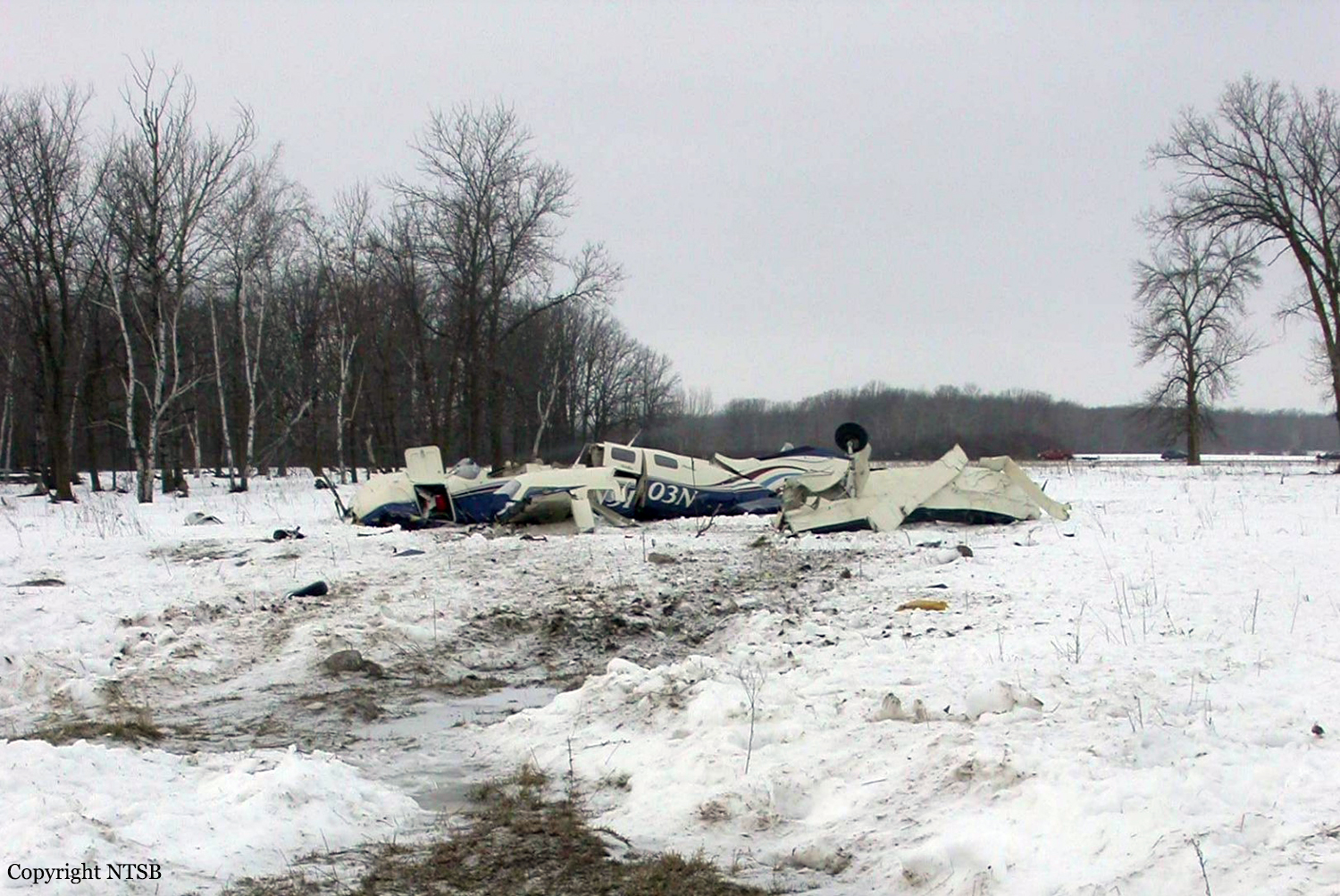

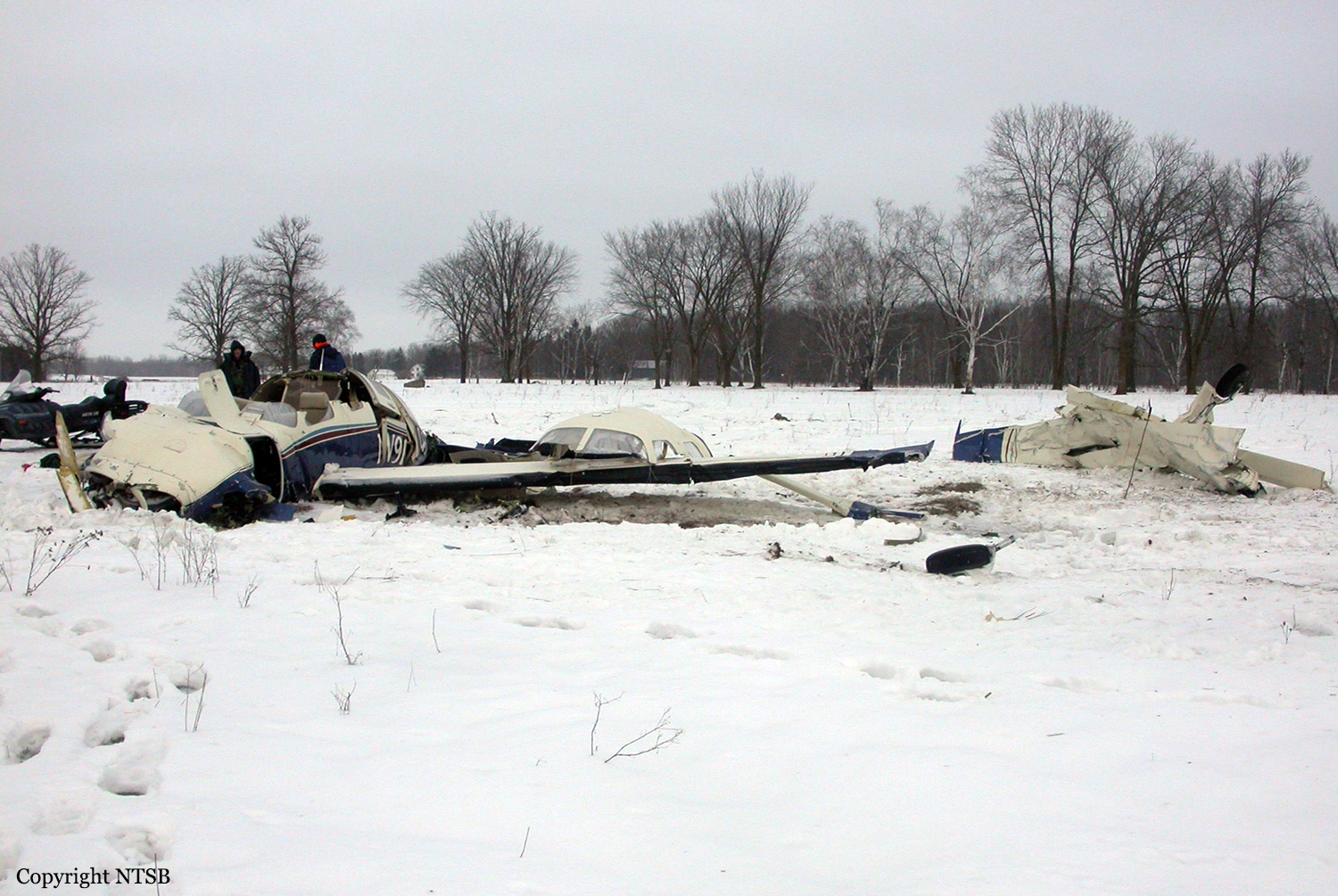
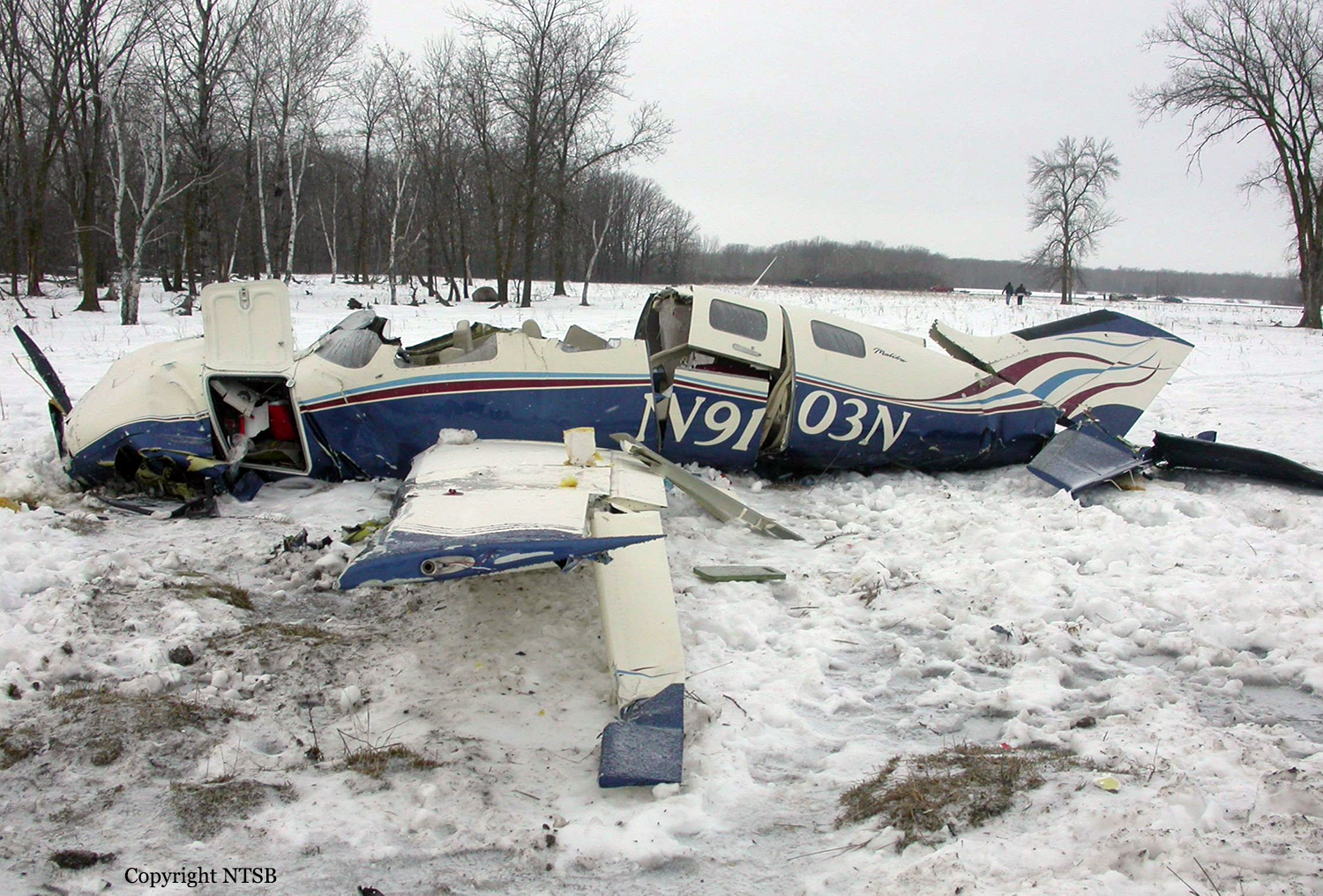
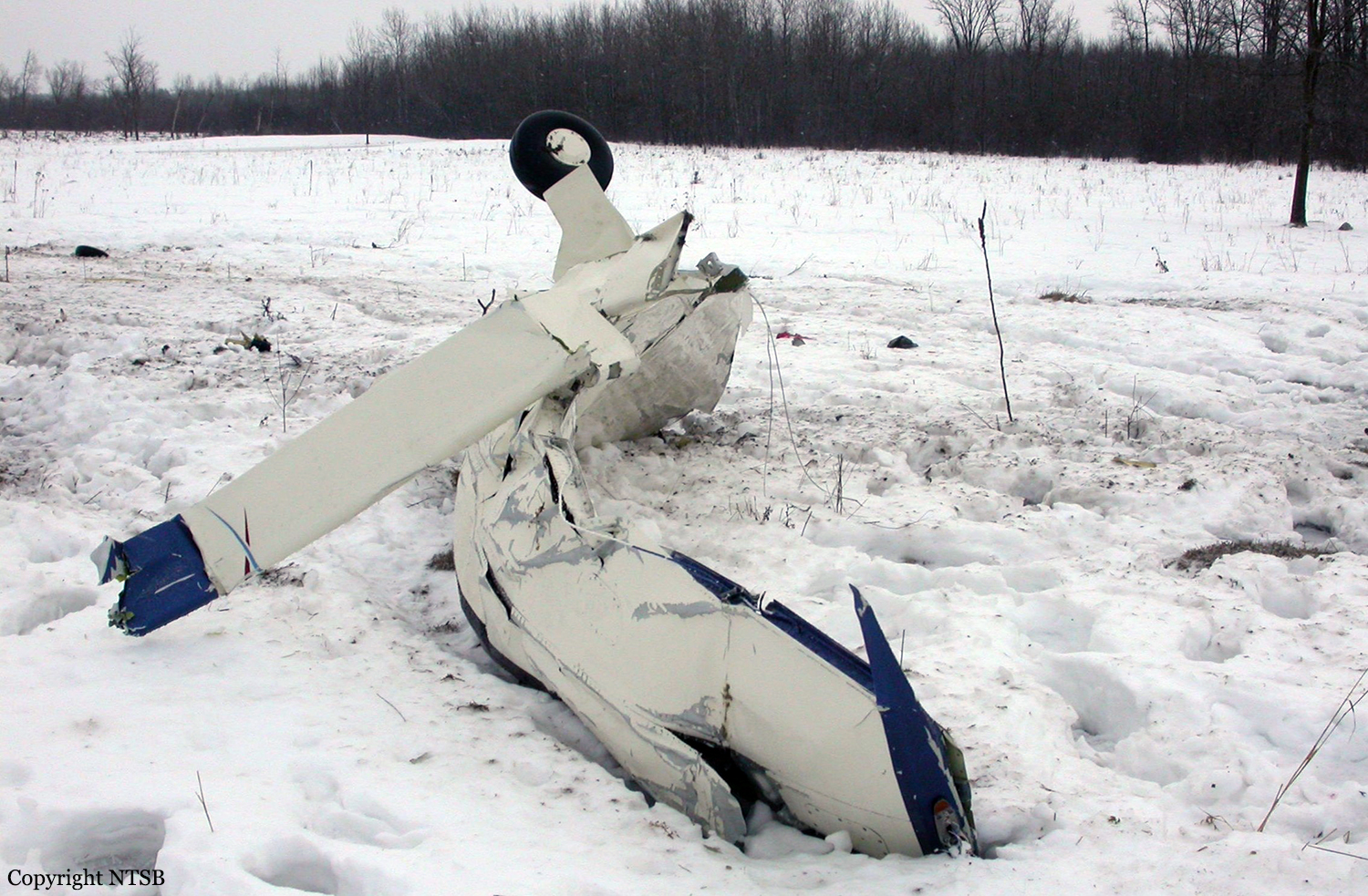
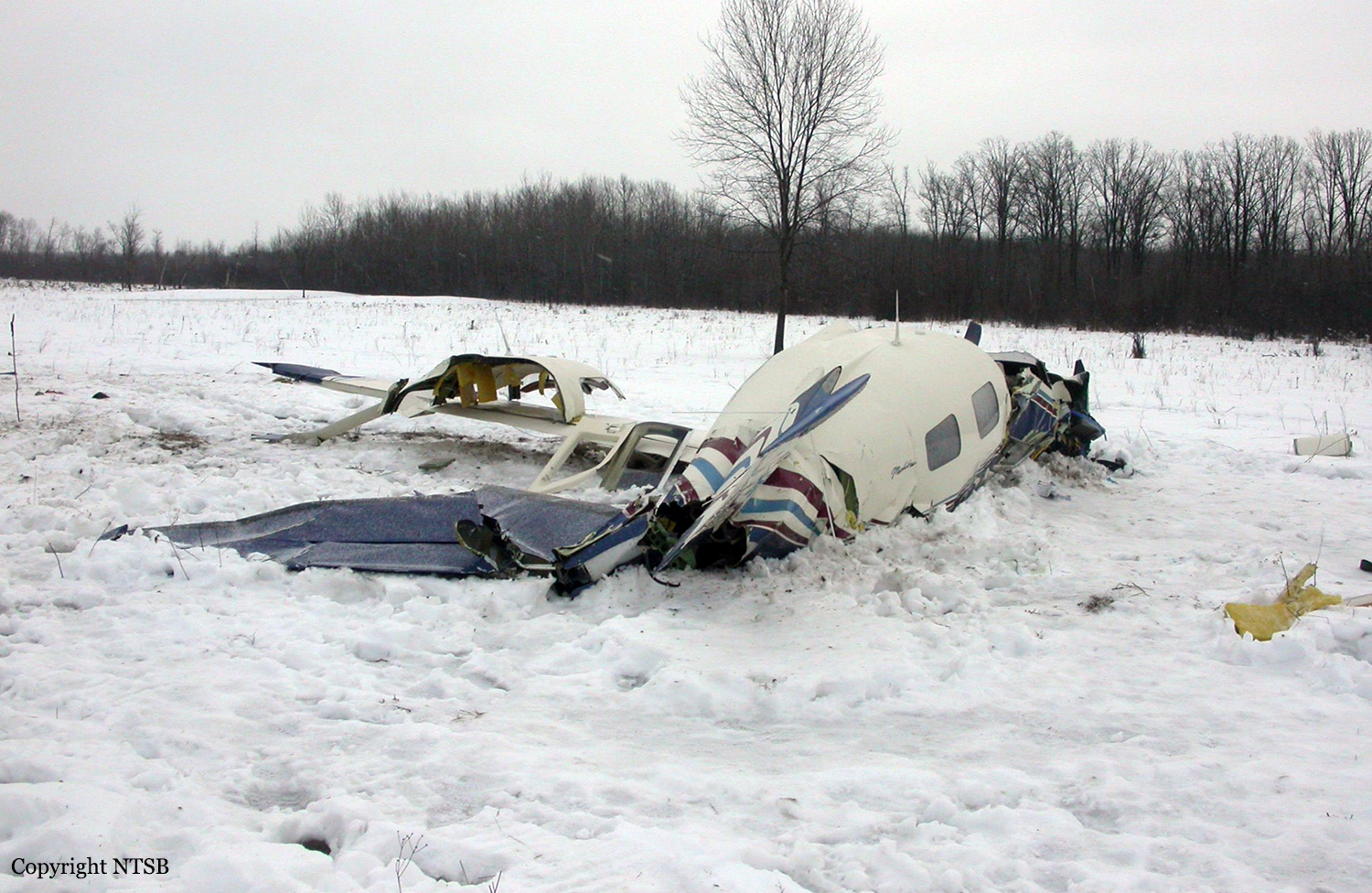

Crash of a Beechcraft E18S in Eden Prairie: 2 killed
Date & Time:
Aug 12, 2009 at 1145 LT
Registration:
N3038C
Survivors:
No
Schedule:
Eden Prairie - Osceola
MSN:
BA-374
YOM:
1958
Crew on board:
1
Crew fatalities:
Pax on board:
1
Pax fatalities:
Other fatalities:
Total fatalities:
2
Captain / Total hours on type:
0.00
Aircraft flight hours:
10626
Circumstances:
The pilot purchased the airplane approximately one year prior to the accident with the intention of restoring it for flight. The airplane had not been flown for approximately five years and had been used for spare parts. The pilot was flying the airplane to another airport to pick up passengers prior to returning. The pilot was cleared for takeoff and to circle the airport at 2,500 feet prior to departing the area. Witnesses reported that after taking off the airplane seemed to “wobble” at a slow airspeed in a nose-high attitude and that it never got higher than 500 feet. Some witnesses reported the engine(s) sputtering, and another stated that the airplane was loud and "didn't sound good," although other witnesses reported that the engines sounded normal. One witness reported seeing white smoke coming from the left engine and hearing the engine "popping" as the airplane took off. The airplane made three left turns and it appeared as if the pilot was attempting to return to land. Witnesses described the left wing rising prior to the airplane banking hard to the left and the nose dropping straight down. The airplane impacted the ground just northeast of the airport property and a postimpact fire ensued. Flight control continuity was established. The right side of the elevator/tailcone structure exhibited black rub marks and scrapes. Grass and nesting material was found inside the left wing. The left fuel valve was found in the OFF position and the right fuel valve was positioned to the rear auxiliary tank. Neither the fuel crossfeed valve nor the fuel boost pump switch was located. The left engine sustained substantial fire and impact damage. The right engine sustained heavy impact damage. The airplane was last fueled one month prior to the accident with 120 gallons of fuel. About 20 engine test runs in addition to high-speed taxi tests had been conducted since then. A Special Flight Permit had been obtained but had not been signed by the mechanic, who did not know that the pilot was going to fly the airplane on the day of the accident. The pilot reportedly did not have any Beech 18 flight experience.
Probable cause:
The pilot’s lack of experience flying the accident make and model of airplane, which led to a loss of control while maneuvering to return to the airport. Contributing to the accident was a partial loss of engine power for undetermined reasons.
Final Report:
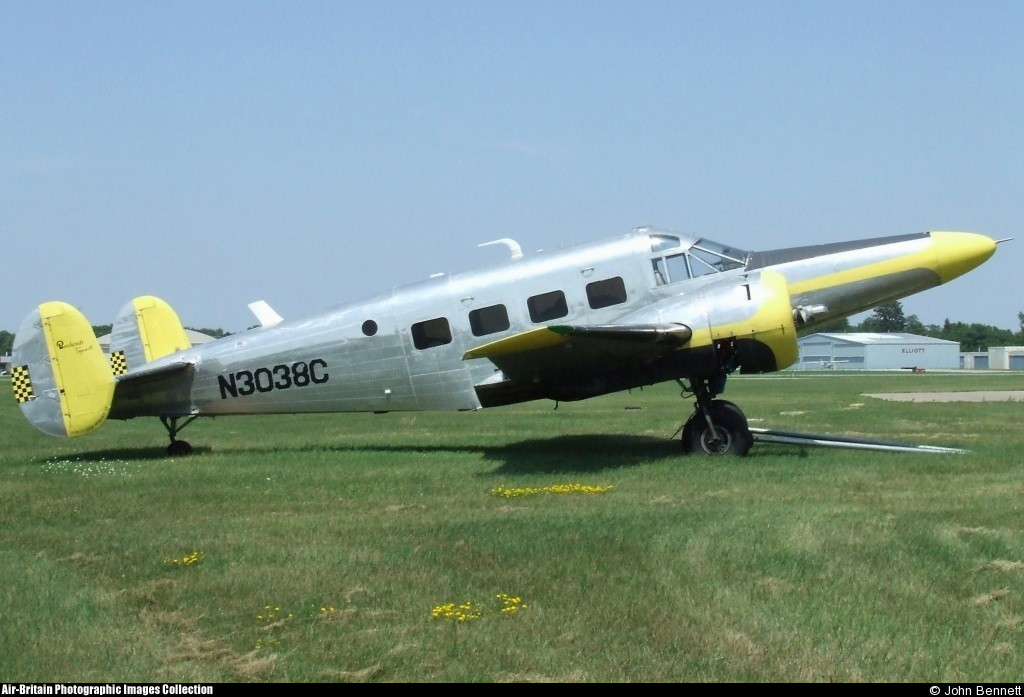
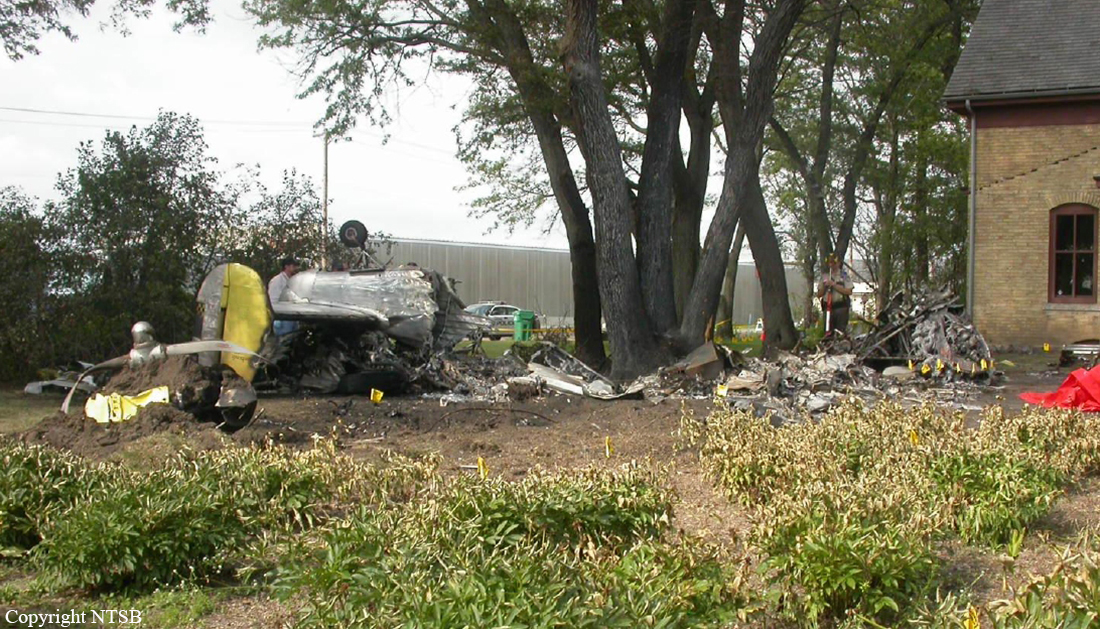

Crash of a BAe 125-800A in Owatonna: 8 killed
Date & Time:
Jul 31, 2008 at 0945 LT
Registration:
N818MV
Survivors:
No
Schedule:
Atlantic City - Owatonna
MSN:
258186
YOM:
1990
Flight number:
ECJ81
Crew on board:
2
Crew fatalities:
Pax on board:
6
Pax fatalities:
Other fatalities:
Total fatalities:
8
Captain / Total hours on type:
1188.00
Copilot / Total hours on type:
295
Aircraft flight hours:
6570
Aircraft flight cycles:
5164
Circumstances:
On July 31, 2008, about 0945 central daylight time, East Coast Jets flight 81, a BAe 125-800A airplane, registered N818MV, crashed while attempting to go around after landing on runway 30 at Owatonna Degner Regional Airport, Owatonna, Minnesota. The two pilots and six passengers were killed, and the airplane was destroyed by impact forces. The nonscheduled, domestic passenger flight was operating under the provisions of 14 Code of Federal Regulations Part 135. An instrument flight rules flight plan had been filed and activated; however, it was canceled before the landing. Visual meteorological conditions prevailed at the time of the accident.
Probable cause:
The captain’s decision to attempt a go-around late in the landing roll with insufficient runway remaining. Contributing to the accident were:
- The pilots’ poor crew coordination and lack of cockpit discipline,
- Fatigue, which likely impaired both pilots’ performance, and
- The failure of the Federal Aviation Administration to require crew resource management training and standard operating procedures for Part 135 operators.
- The pilots’ poor crew coordination and lack of cockpit discipline,
- Fatigue, which likely impaired both pilots’ performance, and
- The failure of the Federal Aviation Administration to require crew resource management training and standard operating procedures for Part 135 operators.
Final Report:


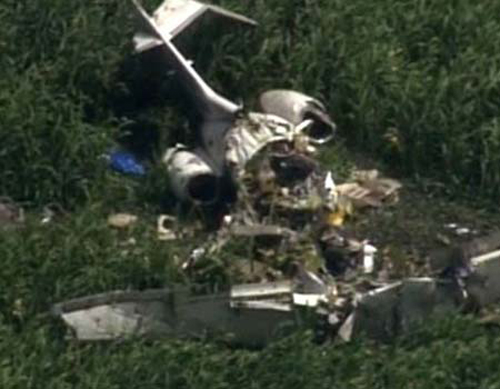



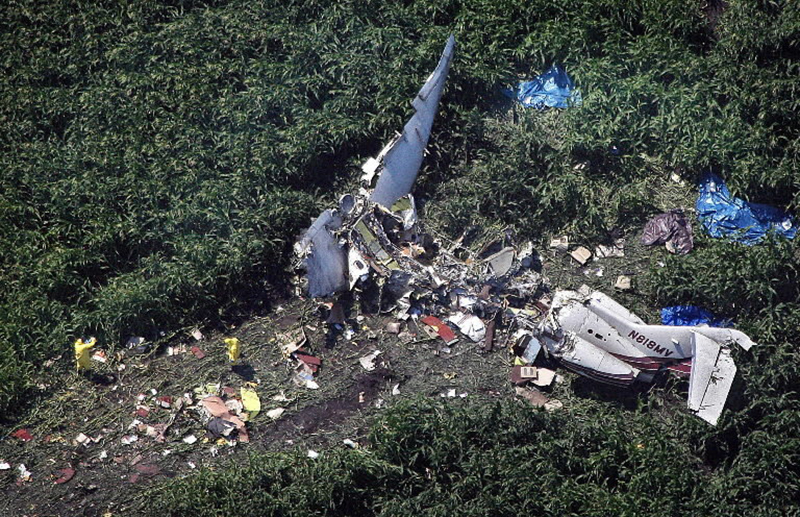
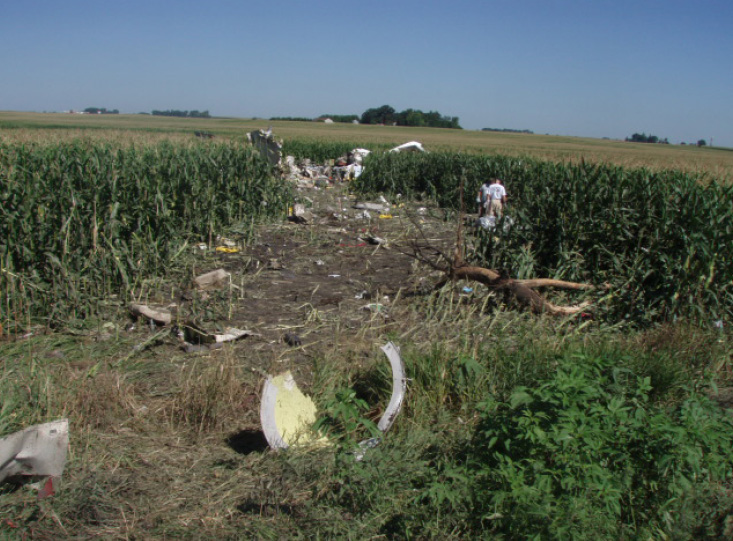
Crash of a Piper PA-46-310P Malibu in Grand Rapids: 1 killed
Date & Time:
Jul 4, 2005 at 1758 LT
Registration:
N4386G
Survivors:
No
Schedule:
Grand Rapids – Minneapolis
MSN:
46-8508037
YOM:
1985
Crew on board:
1
Crew fatalities:
Pax on board:
0
Pax fatalities:
Other fatalities:
Total fatalities:
1
Aircraft flight hours:
1856
Circumstances:
The airplane was destroyed on impact with terrain during a forced landing following an observed in-flight loss of engine power after takeoff. A witness observed the takeoff and stated that the airplane took off from the end of runway 34. About halfway down the runway the airplane emitted a sound like a rapid misfire, a pop, and then no more audible engine sounds. The airplane was about 300 to 400 feet above ground level at that point. He said that the airplane turned right then turned left to a bank where the wing was straight down. The airplane's wings then leveled, the airplane descended, and it impacted terrain. He stated that the time from the sounds to the impact was about two to three seconds. An on-scene examination revealed no airframe pre-impact anomalies. An engine examination revealed a cracked crankshaft propeller flange. The engine without the turbochargers and with the original crankshaft was test run up to 2,100 RPM. A propeller and governor inspection revealed no anomalies. Examination of the turbocharger system's exhaust bypass valve assembly revealed its butterfly valve was stuck (bound) in the extended closed position. The engine's cracked crankshaft was removed and a serviceable crankshaft was installed. The engine was test run again with a serviceable exhaust bypass valve assembly. The engine produced rated power. The original exhaust bypass valve assembly was reinstalled. The exhaust bypass valve assembly's wastegate bound again during an engine run and a loss of engine power was observed. Sectioning of the bypass valve assembly revealed a bent wastegate shaft. The valve assembly lever arm was bent and exhibited pre-impact tool marks consistent with pliers loosening a bound wastegate shaft. The airplane's pilot operating handbook and Federal Aviation Administration (FAA) approved airplane flight manual (POH), in part, stated, "ENGINE POWER LOSS DURING TAKEOFF If sufficient runway remains for a normal landing, leave gear down and land straight ahead." The engine manufacturer's maintenance and operator's manual stated that the wastegate is required to be checked for operation and condition during 100 hour inspections. The manual did not specify a procedure for maintenance personnel on how to check the wastegate's operation and its acceptable condition. National Transportation Safety Board Recommendation A-94-081, issued to the FAA in 1994, stated, "Require the amendment of pilot operating handbooks and airplane flight manuals applicable to aircraft equipped with engine turbochargers by including in the 'Emergency Procedures' section information regarding turbocharger failure. The information should include procedures to minimize potential hazards relating to fire in flight and/or loss of engine power." The airplane's POH latest revision was dated October 14, 2002 and review of the emergency procedures section showed that the POH did not contain information, procedures, or amplified procedures on turbocharger failures. The airplane accumulated 8.7 hours of operation since the last annual inspection.
Probable cause:
An observed loss of engine power due to the bound/jammed turbocharger wastegate during takeoff, the pilot not maintaining airplane control, and the stall he inadvertently encountered. A factor was the maintenance personnel not replacing the turbocharger wastegate bypass valve assembly during the last annual inspection 8.7 hours of operation prior to the accident. An additional factor was the manufacturer's insufficiently defined inspection conditions for the bypass valve's proper operation.
Final Report:
Ground accident of a Douglas DC-9-51 in Minneapolis
Date & Time:
May 10, 2005 at 1936 LT
Registration:
N763NC
Survivors:
Yes
Schedule:
Columbus - Minneapolis
MSN:
47716/822
YOM:
1976
Flight number:
NW1495
Crew on board:
5
Crew fatalities:
Pax on board:
94
Pax fatalities:
Other fatalities:
Total fatalities:
0
Captain / Total hours on type:
6709.00
Copilot / Total hours on type:
3985
Aircraft flight hours:
67268
Aircraft flight cycles:
66998
Circumstances:
The DC-9 was taxiing to the gate area when it collided with a company A319 that was being pushed back from the gate. Prior to arriving at the destination airport, the DC-9 experienced a loss of hydraulic fluid from a fractured rudder shutoff valve located in the DC-9's right side hydraulic system. The left side hydraulic system had normal hydraulic pressure and quantity throughout the flight. The flightcrew elected to continue to the scheduled destination and declared an emergency while on approach to the destination airport. After landing, the emergency was negated by the flight crew and the airplane taxied to the gate. Flight data recorder information indicates the left engine, which provides power for the left hydraulic system, was shut down during taxi. The captain stated he did not remember shutting the left engine down, and that if he had, it would have been after clearing all runways. The first officer stated that he was unaware that the left engine was shut down. Upon arrival at the gate with the left engine shut down and no hydraulic pressure from the left system and a failure of the right hydraulic system, the airplane experienced a loss of steering and a loss of brakes. The flightcrew requested company maintenance to chock the airplane since they were unable to use brakes to stop the airplane. The crew said they were going to keep the "...engines running in case we have to use reversers..." The airplane began to roll forward and the captain applied reverse thrust but the reversers did not deploy. The airplane impacted the A319 with a speed of approximately 15.65 miles per hour to 16.34 miles per hour. Evacuation of the DC-9 was completed approximately 5:22 minutes after the collision and evacuation of the A319 occurred approximately 13:08 minutes after the collision. Examination of the left hydraulic system revealed no anomalies and examination of the right hydraulic system revealed a fractured rudder shutoff valve that displayed features consistent with fatigue. Following the accident, the airplane manufacturer issued a service letter pertaining to the replacement of the rudder shutoff valve based upon reliability information that was reported to them. The number of reports was greater than that of the Federal Aviation Administration's Service Difficulty Reports database, and less than the operators records.
Probable cause:
The Captain's decision to shutdown the left engine during taxi with no hydraulic pressure on the right side hydraulic system to effectively operate the brakes, steering, or thrust reversers. A factor was the fatigue fracture of the rudder shutoff valve which resulted in the loss of right side hydraulic pressure.
Final Report:

